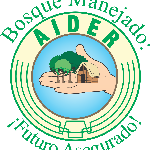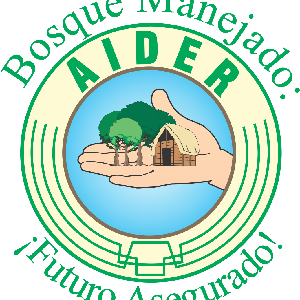Please find below the
Finalist Evaluation
Semi-Finalist Evaluation
Judges'' ratings
| • | Novelty: | |
| • | Feasibility: | |
| • | Impact: | |
| • | Presentation: |
Judges'' comments
In other parts of the world, the widespread introduction of cocoa as a cash crop has driven expansion of the agricultural frontier. Please explain why the project proponent believes this would not occur in this case.
Also, it is unclear why/whether ranchers would want to become cacao farmers. Please elaborate.
It would be helpful to understand more about what Althelia is providing and what they are getting back. Otherwise, it is difficult to assess the replicability of this project.
 Jaime Guillermo Nalvarte Armas Jun 15, 2016 01:37 | Proposal creator Dear Judges, as AIDER team we give response to your comments (we have updated our project description, also). In other parts of the world, the widespread introduction of cocoa as a cash crop has driven expansion of the agricultural frontier. Please explain why the project proponent believes this would not occur in this case This proposal, which differs from the migratory agricultural development scheme - where space is opened in the forest to create farmland - promotes the implementation of agroforestry systems with cocoa in previously deforested areas, which are like that as a product of extensive agricultural and livestock farming (pasture, young secondary forest), that was driven by the Peruvian State during the 80's, and has left several unproductive land by the pressure use there was on soils on Madre de Dios region. This initiative includes a comprehensive farm management (including temporary crops for food security of families, promotion of tourism, fish farms, conservation of watersheds, among others), and a conservation agreement where farmers commit themselves to conserve existing forests in the areas of their land. The idea is that farmers manage their farms through productive agroforestry systems and do not have the need to increase their agricultural areas, therefore, they install cocoa crops in areas that have been deforested before and were useless for them, or are secondary land under 5 years. Also, the cooperative promotes conservation of forest areas within the premises of its partners. Also, it is unclear why/whether ranchers would want to become cacao farmers. Please elaborate In the 80s decade, in Madre de Dios region, there was an aggressive promotion by the Peruvian State, for rural lands (primarily forests) to change their use to the livestock expansion. Many landowners opened their propeties (areas of forest) for this activity, but quickly the ground pressure returned unproductive land and livestock did not prosper in time, so it was left as an activity for human consumption, in most of the cases. Currently, livestock still exists in the region, but profitability is very low and there are few people who are engaged in it. Many of the areas that were opened for livestock have no use today and its owners are seeking alternatives that allow them to generate profits and recover the soil, which is very impoverished and unproductive, but can be recovered. Many farmers recognize that hey eliminated much of its forest for cattle ranches and now they find it harder to get the resources that forest provided them as fruits, firewood, shade, etc. and they consider that they do not properly managed their area, so they are interested in activities that generate economic benefits and allow them to recover the forest, as it was more useful to them in their natural state. The installation of agroforestry systems is presented as the best alternative, because it ensures food security, incomes in the short (banana, pigeon pea, cassava) medium (cacao and guava) and long term (wood), without degrading the forest. It would be helpful to understand more about what Althelia is providing and what they are getting back. Otherwise, it is difficult to assess the replicability of this project. Althelia finances the implementation of agroforestry systems with cocoa in the buffer zone of the Tambopata National Reserve (the Project) and the components of biological monitoring and research of the Partial Administration Agreement that AIDER has with the Peruvian government (for the Tambopata National Reserve and Bahuaja Sonene National Park). AIDER has a REDD+ project in these reserves and its main objective is to avoid deforestation. Althelia has, as a guarantee, the VCUs generated by avoided deforestation and, about the project (Agroforestry with cocoa) receives an amount of return for is investment, product of the cocoa marketing through the cooperative. |
 Jaime Guillermo Nalvarte Armas Jun 15, 2016 02:07 | Proposal creator Within the description of the proposal, we have incorporated our responses in a more summary way. We note them below: In other parts of the world, the widespread introduction of cocoa as a cash crop has driven expansion of the agricultural frontier. Please explain why the project proponent believes this would not occur in this case In "Summary": In contrast of the conventional practices such as migratory agriculture or livestock, this Project promotes the restoration of degraded and deforested areas through implementation of agroforestry systems with fine flavour cocoa, considering a farm integral management, including the promotion of touristic activities, fish farms and conservation of micro watersheds. To be part of this iniative, the farmer have to sign a conservation agreement to preserve primary forests in their lands. The idea is to increase productivity in degraded areas so that, farmers won´t need to cut more primary forest to expand their agriculture area; also the project has created a farmers cooperative, which is the way to associate them, promote conservation and secure route to market for cocoa. Also, it is unclear why/whether ranchers would want to become cacao farmers. Please elaborate In "What actions do you propose": During 80s, peruvian government had an aggressive promotion of the expansion of cattle farming in Madre de Dios region. Actually, this activity has a low profitability; for this reason, those areas had no use and owners are looking for another alternatives with economic benefits and recovers the soil which are poor and unproductive. Most of the families settled in Tambopata National Reserve buffer zone, address their effort to cattle with low incomes, breeding of small animals, sowing for annual subsistence crops, etc. Actually, farmers manifest that they destroyed forests because of cattle and now is difficult to get resources from it like fruits, firewood, etc., because they did not manage correctly the area, so now they are seeking for new activities which bring them economic benefits. The conventional system requires clearing new areas every year, having as a result forest loss and soil degradation. For that reason, this proposal is well receive by farmers, because it will recover their degraded lands, increase their productivity and secure the market for the commertialization of the agroforestry products (cocoa, banana, etc). Also implementing agroforestry systems will guarantee food security, short term incomes (banana, pigeon pea, manioc), medium term (cocoa and Inga sp. fruits), long term (cocoa and Wood) without the need of destroying forest. It would be helpful to understand more about what Althelia is providing and what they are getting back. Otherwise, it is difficult to assess the replicability of this project. In "Who will take these actions?" - Althelia Climate Fund, who finances the conservation activities (biological monitoring and research) inside the Tambopata National Reserva and Bahuaja Sonene National Park and the implementation of agroforestry systems with cocoa in the buffer zone. The guarantee on the investments are the VCUs (Verified Carbon Unit) generated by avoided deforestation. Also Althelia have a profit sharing agreement on the cocoa sales of the farmers cooperative.
|
